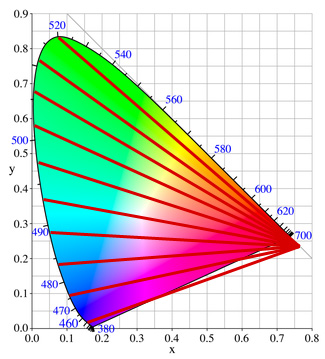Hey, everybody knows that red-green color blindness is the most common type of color vision deficiency. How can I claim that it doesn’t exist at all? – I’ve got not only one but three reasons which support my statement that there is no type of color vision deficiency which really deserves the name red-green color blindness.

When you realize or get told that one of your friends is colorblind, most probably you remember the term red-green color blind and try to imagine, what this means:
- My friend can neither see red nor green?
- He can’t distinguish those two colors at all?
- Besides red and green he has no problems with colors?
- Or maybe red and green look like gray to him?
This is all wrong and the reason why I say, that there is no such form of color deficiency which should be called red-green color blindness. And here are my three arguments which strongly support the sentence: Red-green color blindness doesn’t exist.
(1) Red-green color blindness doesn’t exist, because there are really two distinct forms: red-blindness (protanopia/protanomaly) and green-blindness (deuteranopia/deuteranomaly). Protan defects are caused by a shift of the peak of the red sensitive cones in your eye towards the green peak, or if they are missing at all. For deutan defects the same is true for the green sensitive cones. And even if the naming sounds like a combination of both, you are suffering just under one of them.
(2) Red-green color blindness doesn’t exist, because if you are colorblind you will encounter problems with colors from the whole color spectrum. There is no such color vision deficiency which is only focusing on certain colors like red or green. The so called confusion lines can give you a quite good understanding of how a color spectrum is seen by color blind people.
(3) Red-green color blindness doesn’t exist, because if you are really colorblind, you really can see only in gray. This is called monochromacy or achromatopsia, which affects only a handful of all color blind people. In this case it doesn’t make sense to talk about any colors at all. On the other side, if you have only problems with your red, green or blue sensitive cones, this isn’t actually color blindness but some form of color vision deficiency. Or as I put it in another article: Color Blindness is not ‘Color Blindness’.
If you still think, that you are suffering from red-green color blindness, have a look at Which Type of Red-Green Color Blindness is It? and learn more about the real type of your color vision deficiency.






